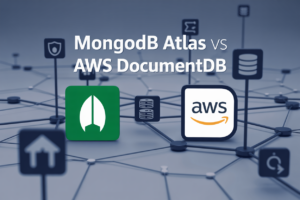Ever hit refresh on an app and waited 12 seconds for it to load? That’s 11 seconds too many in a world where users abandon ship after just 3. Behind every lightning-fast application, there’s a well-designed cache system quietly making magic happen.
I’m about to show you exactly how to master cache systems to build high-performance applications that keep users happy and servers humming.
Think of caching as that friend who remembers everything so you don’t have to repeat yourself. It’s the difference between an app that feels like molasses and one that anticipates your next move.
But here’s where most developers go wrong: they slap on basic caching as an afterthought instead of weaving it into their architecture from day one. And that critical mistake is costing them more than they realize.
Understanding Cache Systems and Their Impact
What are cache systems and why they matter
Cache systems are like your brain’s short-term memory for applications. They store frequently-accessed data closer to where it’s needed, eliminating repetitive, expensive operations. Think about checking your phone constantly versus memorizing important information. That’s what caches do – they remember, so your application doesn’t have to keep asking the same questions.
How caches transform application performance
Picture this: your app without caching is like grocery shopping without a list – constantly backtracking and wasting time. Caches slash response times from seconds to milliseconds. They reduce database load by up to 95% and handle traffic spikes that would otherwise crash your system. The difference isn’t subtle; it’s like upgrading from a bicycle to a sports car.
The cost of ignoring proper cache implementation
Skip implementing caches and you’re basically telling users, “I don’t value your time.” Applications crawl when they should sprint. Servers buckle under load that should be manageable. Costs skyrocket as you throw hardware at problems that caching could solve elegantly. Worst of all, users bounce when pages take more than 3 seconds to load.
Key performance metrics improved by caching
Caching supercharges the metrics that actually matter:
| Metric | Typical Improvement |
|---|---|
| Response time | 300-1000% faster |
| Server load | 50-80% reduction |
| Database queries | 70-95% reduction |
| Throughput | 200-500% increase |
| Cost efficiency | 30-60% infrastructure savings |
These aren’t just numbers—they’re the difference between an app people love and one they abandon.
Types of Cache Systems for Modern Applications
Types of Cache Systems for Modern Applications
A. Browser-based caching strategies
Ever tried revisiting a website and noticed it loads faster the second time? That’s browser caching in action. By storing static assets like images, CSS, and JavaScript files locally, browsers slash load times dramatically. Control this with HTTP headers like Cache-Control and ETag to determine what gets cached and for how long.
B. CDN caching for global performance
CDNs are the unsung heroes of the internet. They store copies of your content on servers worldwide, delivering pages from locations physically closer to your users. When someone in Tokyo accesses your US-based site, they’re actually grabbing content from a nearby Asian server. This slashes latency and handles traffic spikes like a champ.
C. Application-level caching mechanisms
App-level caching is where the real performance magic happens. Instead of repeatedly executing expensive operations, store results in memory. Redis and Memcached excel here – keeping frequently accessed data ready to serve in microseconds. Smart implementations can cut response times by 300% or more, especially for calculation-heavy operations.
D. Database query caching techniques
Database queries often become bottlenecks as applications scale. Query caching stores results from expensive database operations, eliminating redundant work. Whether using ORM-level caching, materialized views, or dedicated solutions like MySQL Query Cache, the principle remains: don’t recalculate what you already know.
E. Distributed cache systems explained
Distributed caching shines in multi-server environments where a single cache server won’t cut it. Systems like Redis Cluster, Hazelcast, and Aerospike distribute cached data across multiple nodes, providing horizontal scalability and fault tolerance. They’re the backbone of high-traffic applications where downtime isn’t an option and milliseconds matter.
Implementing Cache Strategies Effectively
Implementing Cache Strategies Effectively
A. Determining what data to cache
Cache the data your users need most. Not everything deserves precious memory space. Start with frequently accessed items that rarely change but take time to generate. Your database queries hitting the same records repeatedly? Those are prime caching candidates. Monitor access patterns before deciding – what seems obvious might surprise you when you check the actual numbers.
B. Setting appropriate cache expiration policies
Your cache expiration policy can make or break performance. Too short? You’ll waste CPU regenerating data. Too long? Users see stale content. There’s no magic number here. Match TTL to how often your data naturally changes. Critical financial data might need seconds, while product categories could live for hours. Start conservative, then adjust based on real-world metrics.
C. Cache invalidation approaches that work
Cache invalidation isn’t just hard—it’s where most systems fail spectacularly. Don’t rely on timeouts alone. Implement proactive invalidation when data changes at the source. Consider write-through caching for critical data. Pattern-based invalidation works well for related items. Remember the golden rule: explicit invalidation beats time-based expiration for data accuracy every time.
D. Balancing memory usage with performance gains
Memory isn’t infinite, even in the cloud. Track your cache hit rates religiously—anything below 80% needs attention. Implement size limits and eviction policies (LRU usually wins). Consider time-decayed importance for items. The real magic happens when you right-size your cache—too small misses opportunities, too large wastes resources and increases search time. Measure, adjust, repeat.
Common Caching Patterns and Best Practices
Common Caching Patterns and Best Practices
A. Cache-aside pattern for optimal read performance
Ever noticed how your favorite apps seem to “just know” what data you need? That’s cache-aside in action. When your application needs data, it checks the cache first. Cache miss? Grab it from the database, store it in cache, then return it. This pattern slashes response times and keeps your database from melting down during traffic spikes.
Cache System Technologies Comparison
Cache System Technologies Comparison
A. Redis vs. Memcached: choosing the right tool
Ever tried picking between Redis and Memcached? It’s like choosing between a Swiss Army knife and a razor-sharp kitchen knife. Redis offers rich data structures and persistence while Memcached wins on simplicity and raw speed. Your decision hinges on whether you need advanced features or pure caching performance. Most teams needing only basic caching lean toward Memcached, while those requiring pub/sub, transactions or data persistence pick Redis.
Monitoring and Optimizing Cache Performance
Monitoring and Optimizing Cache Performance
A. Essential metrics to track for cache health
Ever wonder why your perfectly designed cache still underperforms? The secret lies in tracking the right metrics. Hit ratio, miss ratio, and latency are your non-negotiables here. Without these numbers, you’re basically flying blind. Memory usage and eviction rates also tell you when your cache is getting crowded. Monitor these consistently and you’ll spot problems before users do.
B. Tools for cache visibility and debugging
Cache issues driving you crazy? The right tools make all the difference. Redis CLI gives you instant visibility into what’s happening with your Redis instance. Memcached’s stats command reveals vital performance data in seconds. For more sophisticated setups, Datadog and New Relic offer gorgeous dashboards that track everything in real-time. Prometheus paired with Grafana? That’s cache monitoring nirvana for serious engineering teams.
C. Optimizing hit ratios through data analysis
Your hit ratio isn’t just a number—it’s the heartbeat of your cache system. Boosting it from 80% to 95% can dramatically transform user experience. Start by analyzing access patterns in your logs. Which items get requested but miss the cache? Which cached items never get used? The answers often surprise even experienced developers. Implement TTL strategies based on actual usage patterns, not assumptions. Predictive prefetching based on user behavior can work wonders too.
D. Scaling cache systems as applications grow
Your cache solution that worked perfectly at 10,000 users will likely crumble at 100,000. Horizontal scaling beats vertical scaling nearly every time for cache systems. Sharding distributes your cache load across multiple nodes, preventing any single point of failure. Consider read replicas for hot data. And don’t wait for problems—set clear thresholds that trigger automatic scaling actions before users notice slowdowns. The best cache scaling is the kind users never even realize happened.
Advanced Caching Techniques for Specific Use Cases
Advanced Caching Techniques for Specific Use Cases
A. Caching for microservices architectures
Microservices need special caching approaches. Distributed caches like Redis shine here, preventing the dreaded “thundering herd” problem when multiple services hit the same data. Consider using client-side caching with time-based invalidation or implementing a dedicated cache service that all microservices can query before hitting databases.
Effective cache systems are the backbone of high-performance applications in today’s digital landscape. By understanding different cache types, implementing strategic caching patterns, and choosing the right technologies for your specific use case, you can dramatically improve your application’s response time and reduce infrastructure costs. The monitoring and optimization techniques discussed provide the tools needed to maintain peak cache performance, while the advanced caching techniques offer solutions for specialized scenarios.
As you continue developing your applications, remember that caching is not just a performance enhancement—it’s an essential architectural component that requires thoughtful design and ongoing attention. Start by implementing basic caching strategies in your current projects, then gradually adopt more sophisticated techniques as you become comfortable with the fundamentals. Your users will appreciate the snappy experience, and your infrastructure team will thank you for the reduced server load. The journey to mastering cache systems is continuous, but the performance benefits make it well worth the effort.




















